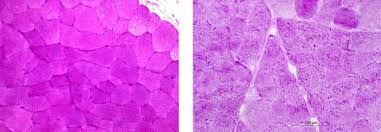
Introduction
By developing healthy postural muscles and topline, we can help the horse become balanced and supple, enabling them to perform more easily and efficiently while limiting any damage that may result from the weight of a rider or general wear and tear to the body.
In contrast, a horse who uses his muscles incorrectly, can be predisposed to discomfort, weakness, fatigue and injury.
As an industry we are obsessed with head and neck position; is it too high, too low, infront or behind the vertical? Often an uneducated eye can be misled by a horse who looks to be working ‘in a frame’ or ‘on the bit’, but the development of your horse’s muscles do not lie.
No matter how impressive the horse looks when it is working, if its muscles are developing incorrectly it is a sign that something is a miss.
(NOTE: The following descriptions have been simplified to aid learning, the muscles can not work in isolation and there is always interaction throughout the body. More detailed explanations are available in anatomy textbooks.)
Muscle One: The Brachiocephalicus
As a body worker, the Brachiocephalicus muscle is one I commonly see becoming very sore and tight. This muscle runs from the very back of the skull (temporal bone), with attachments to the 1st, 2nd, 3rd and 4th cervical (neck) vertebrae, and inserts onto the humerus (top forelimb bone) just below the scapula.
The Brachiocephalicus muscle has multiple functions and plays a large role in locomotion:
- If the forelimb is raised and the head and neck are stabilized by other muscles, contraction of this muscle will draw the forelimb forwards. Correct conditioning of this muscle is essential if you want to achieve extension and collection in dressage, swift and accurate clearance over a jump or breath taking acceleration at the gallop.
- If the forelimb is on the ground, contraction of this muscle on one side will result in lateral flexion of the head and neck (turning to the side), pretty important when you want to ride a circle or perform any lateral movements, or simply ask your horse to ‘look’ in the direction of travel.
- By engaging the brachiocephalicus muscles on both left and right, the neck vertebrae are pulled downwards and the head back. Some horses learn to engage (contract) this muscle when asked to flex at the poll, especially if the core postural muscles have not been sufficiently conditioned. However, over reliance on the brachiocephalicus muscle to sustain the outline will result in significant muscle tension and soreness through the underside of the neck.
Results of Overuse of The Brachiocephalicus
Soreness or restriction of the brachiocephalic muscle will make it very uncomfortable for your horse to bend through the head and neck, they may become short and choppy in their stride and become reluctant to flex at the poll. This muscle is also involved in adduction of the forelimb (movement inwards toward the body) and any restriction may result in discomfort during lateral exercises such as leg yield.
Along with performance issues, there can sometimes be visible signs that the brachiocephalicus muscle is not working optimally.
You may be familiar with the term ‘Ewe neck’, the horse whose neck seems to be constantly built ‘upside down’ with a bulging muscle at the base and a weak, concave shape to the crest.
Horses who overuse their brachiocephalic muscle can become hypertrophic (over muscled) and it will bulge out, becoming very firm and often sore to touch. This over development makes it very difficult for a horse to flex softly at the poll and is a sign that the horse is not using the muscles of their core and topline effectively.
Continue reading in the next post here: https://www.equitopiacenter.com/essential-muscles-and-their-function-2/





